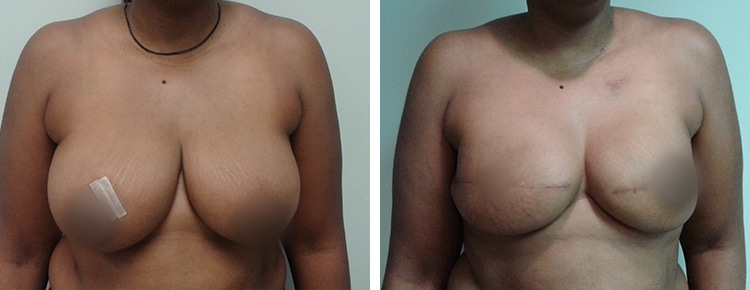Mastectomy
For many breast cancer patients, mastectomies can be life-saving procedures that include the removal of various parts of the breast, lymph nodes, and surrounding area. “Mastectomy” is the term for the removal of the breast, but can often refer to a few different procedures of differing severity.
Simple or Total Mastectomy
This procedure is most often recognized under the term ‘mastectomy’. In this procedure, the entire breast is removed, while the lymph nodes near the armpit are left in place. No underlying muscles are removed, either. This procedure most often prevents any further breast cancer from developing.
Radical Mastectomy
This procedure, aside from removing the breast, also removes the underarm lymph nodes and pectoral muscles underneath the breast. Because it is “radical”, it is only performed on patients in which cancer has spread to the surrounding chest area.
Modified Radical Mastectomy
The “modified” form of the above procedure, this leaves the underlying muscles intact, as well as certain lymph nodes. This procedure is beneficial to cases of large tumors or cancer that has spread to the lymph nodes. This procedure is more often performed than the unmodified version because of less muscle disfiguration.
Partial Mastectomy
This procedure removes only the cancerous tissue from the breast, similar to a lumpectomy, as well as some of the surrounding tissue.
Skin-Sparing and Nipple-Sparing Mastectomy
As the name indicates, these procedures remove all breast tissue (and sometimes the nipple-areolar area) and leave the skin intact. This leaves the greatest advantage for breast reconstruction, often done immediately afterward.
These procedures can be customized to best fit your needs and provide a smooth recovery. Be sure to speak with your surgeon about your options for breast reconstruction during or following your mastectomy procedure.
Lymph Node Mapping and Biopsy
A mastectomy procedure often includes lymph node mapping, which can help determine the lymph nodes that are affected and where they are located. This is done by injecting a radioactive or dyed substance into the cancerous area and observing as it travels into the affected lymph nodes that the tumor drains into, which can then be removed. Some lymph nodes may be analyzed to observe further cancerous activity.
If you have questions about our mastectomy procedures and would like to ask questions, contact our office to schedule a consultation with Dr. Richardson today.





 (228) 897-1400
(228) 897-1400



